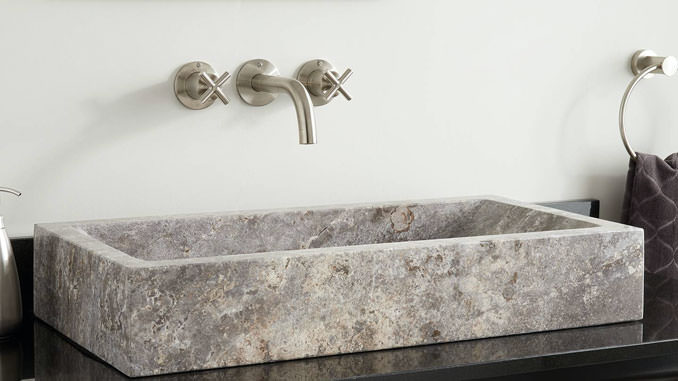
Used widely in construction for its robustness and malleability, for the construction of floors and walls for interiors and exteriors of the house, travertine is a limestone-like sedimentary rock. It has a variable natural color, which depends on the oxides absorbed thanks to its porosity: white, walnut, red, and yellow.
If you have a sink made of this particular material, it can be not easy to clean it. Over time, it tends to blacken or become stained. In this guide, we will provide you with useful tips for cleaning it.
Remove surface residues
To keep a sink always clean and without signs of wear, constant cleaning of the surface is necessary. Even if it is a fairly resistant material, it may get stained due to the dishes inside it or contact with food residues. It is advisable to remove surface residues as soon as possible with a slightly damp cloth and place rubber mats in the sink to protect it.
Use natural products
If the sink does not show signs of excessive dirt, clean it with a microfiber cloth, using neutral soap or Marseille soap, rinse and dry carefully. If limescale is present, appliances must be used for steam cleaning, contributing to eliminating dirt. In stubborn stains, it is possible to limit their visibility with acetone or hydrogen peroxide at 24/36 volumes.
Avoid corrosive substances
Products that can corrode the surface or make it opaque like bleach, ammonia, and acetone must be avoided. Please do not use chemicals that contain dyes, as in alcohol, which would be absorbed by travertine and damage it. If you are not sure of a product’s effect, try a hidden part of the surface to test it.
Use specific products
There are numerous specific products on the market for the treatment of this type of surface. In this way, you will avoid using others that could cause damage. They are divided into categories based on the function they perform: anti-limescale, disinfectant, sanitizing, greasy, and for routine maintenance.
Do not use abrasive products.
Even if the sink is filthy or with evident stains, do not use sponges or abrasive brushes, affecting the surface. Micro-fiber cloths or soft bristle brushes are sufficient.